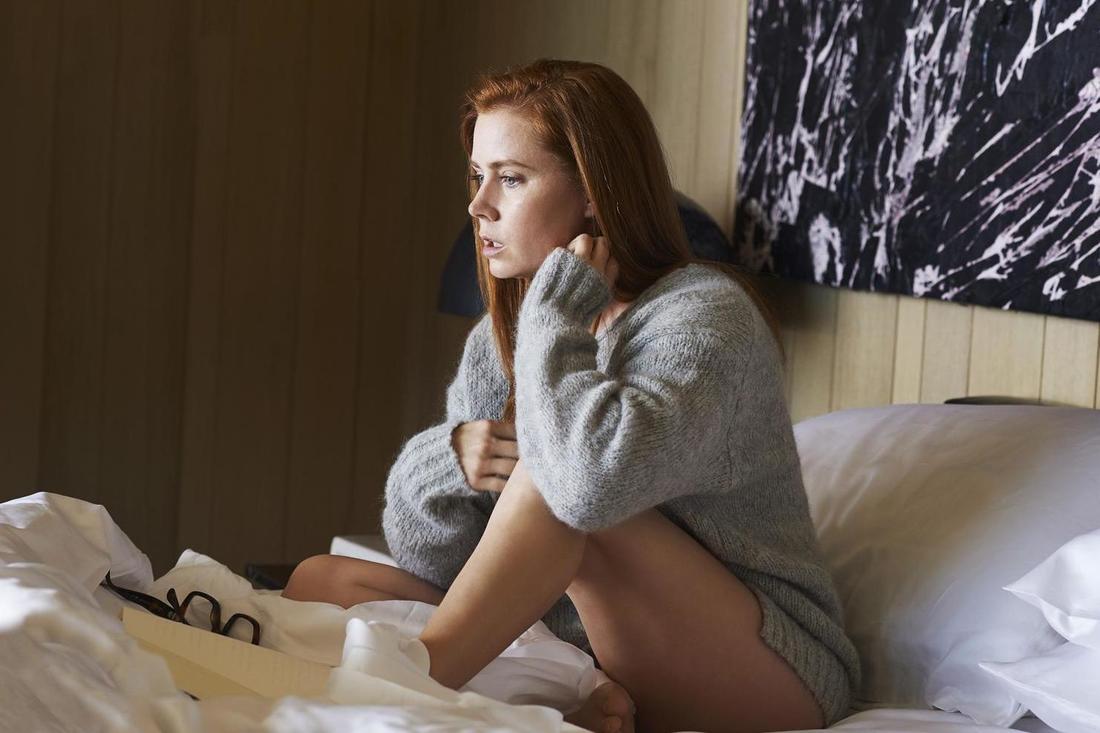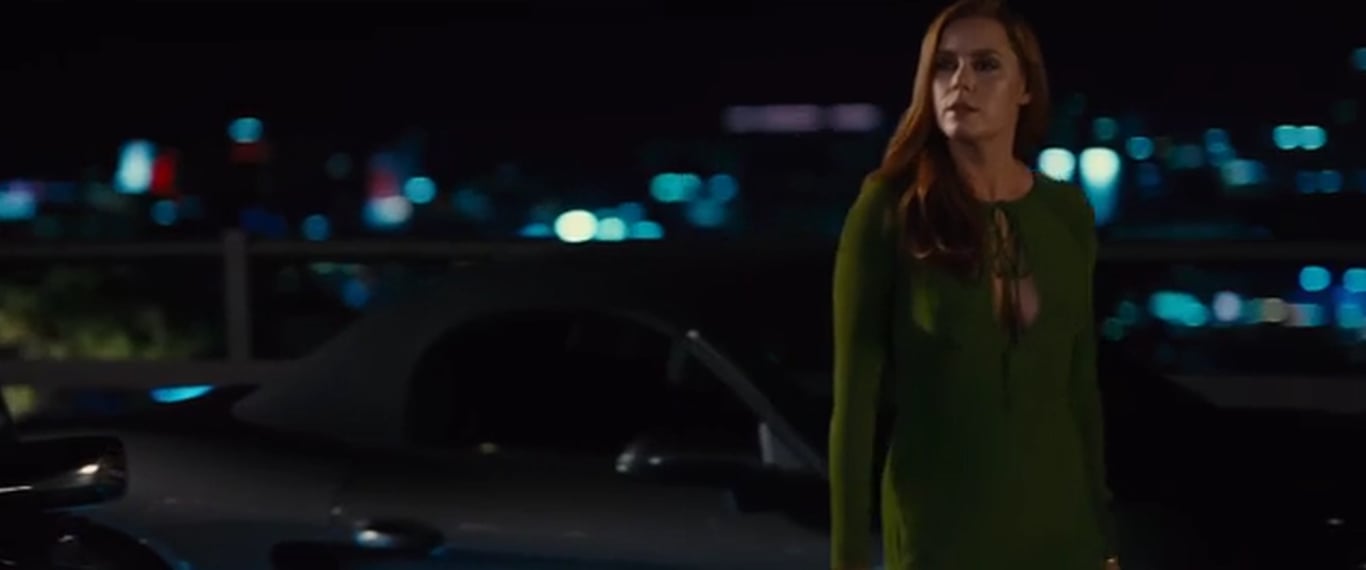
by Megan Hess
Everyone knows the adage “don’t judge a book by its cover.” Similarly, I believe that “don’t judge a film by its opening sequence” should also be added to popular lexicon. Nocturnal Animals (Ford 2016), Tom Ford’s sophomore feature film, opens with a baffling display of what seems like performance art: obese women dancing, either entirely nude, or only wearing a red, glittery sash that matches the red curtains in the background. This sequence differs so vastly from the rest of the film’s content that it is hard to see how it even relates. However, watching these first few minutes – an exquisitely uncomfortable experience – is crucial for a full understanding of Nocturnal Animals, because it introduces the movie’s major themes, like the idea of art as a conduit for vulnerability.
At first, Susan (Amy Adams), the protagonist of Nocturnal Animals does not seem like someone who would be described as “vulnerable.” Successful, wealthy, and stylish, she wears her ennui like just another carefully chosen accessory. But when she comes home and finds her ex-husband, Edward (Jake Gyllenhaal) - a man she has not spoken to for 20 years - has sent her a finished draft of his new novel, “Nocturnal Animals,” she settles down in bed to read it, unaware it will strip her emotionally bare, making her as emotionally naked as the models at her gallery opening were physically. At this point, the film becomes a story inside a story. Edward’s novel is about a man named Tony (Jake Gyllenhaal) whose family vacation is ruined by a tragedy which drives him to do unimaginable things…but, in Susan’s mind, it is also a thinly veiled metaphor for their relationship, one attacking her for past indiscretions. (Whether this is actually what Edward is doing with his novel is up to the viewer; reading the film this way just happens to make sense to me.)
I also believe critiquing the film this way does a disservice to the talented cast. Although Ford is relatively new to the industry, his fashion fame gives him connections, which allows him to scoop up top-tier talent for his films. Out of the main cast, only Michael Sheen received an Oscar nomination for his performance – one I believe should have gone to Aaron-Taylor Johnson instead. Having only seen him in Kick-Ass (Vaughn 2010) Captain America: The Winter Soldier (Russo & Russo 2014) Avengers: Age of Ultron (Whedon 2015) and The Thief Lord (Claus 2006) (although I did not know it was Aaron-Taylor Johnson at the time), I do not feel like I got to see the full extent of what he was capable of as an actor. In Nocturnal Animals, Taylor-Johnson plays Ray Marcus, the antagonistic foil to Jake Gyllenhaal’s character, and a version of what I call the “downhome psychopath” archetype. (Other excellent on-screen examples of this character type: Robert Knepper as Theodore “T-Bag” Bagwell in Prison Break (Scheuring 2005 -2009), or Sam Rockwell as ‘Wild Bill’ Wharton in The Green Mile (Darabont, 1999.) His performance is intimate – almost too intimate at times, thinking of one scene in particular - and wholly unforgettable. This is both a strength and a weakness for Nocturnal Animals; Taylor-Johnson’s amorality and animal magnetism are compelling, but dim the rest of the performances. Adams and Gyllenhaal perform well with what they are given, but neither of their characters are standout, giving some weight to critics who claim the film is all visual spectacle. However, I feel like that is a characteristic inherent to the source material (Austin Wright’s novel Tony and Susan) and, as such, unavoidable in a decent adaptation. Susan is a distancing character by nature; we do not have any reason to feel anything but neutral towards her. Tony is more relatable, but, at the same time, we know he is a fictional character, and cannot fully relate to him and his circumstances. Ford makes the distance work for him more effectively than it does in Wright’s book, using it to reinforce the film’s bleak vision.




 RSS Feed
RSS Feed
